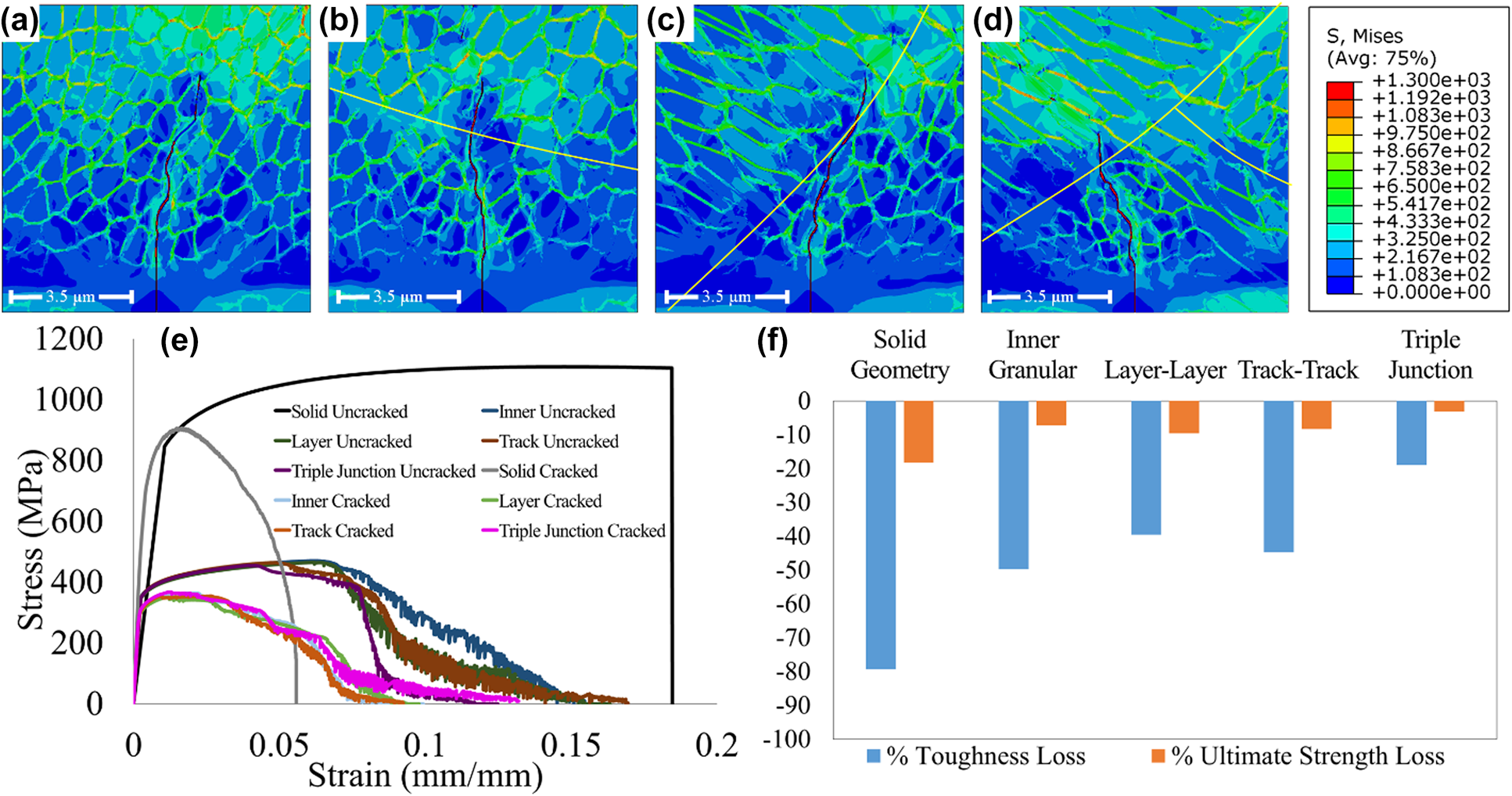Article contents
Deformation mechanisms and defect tolerance in the microstructure of 3D-printed alloys
Published online by Cambridge University Press: 06 April 2020
Abstract

A novel approach is utilized to investigate the deformation mechanisms at the microstructural level in 3D-printed alloys. The complex formation methods leave a unique and complicated microstructure in the as-built 3D-printed alloys. The microstructure is three leveled, composed of meltpools, grains, and cells. Deformation mechanisms in this microstructure are still highly unexplored due to the complexities of analysis at this scale. To understand these, we establish an image processing framework that converts scanning electron microscope (SEM) images directly into models that are scaled up and 3D printed with representative stiff and soft materials for the proposed material types within the body. These bodies are loaded in uniaxial tension with digital image correlation to study the strain gradient and stress delocalization as a result of the microstructure. The same models were tested through Finite Element Analysis (FEA) with materials similar to reality. Our testing shows the hierarchical material distribution leads to an increased damage tolerance.
- Type
- Article
- Information
- Journal of Materials Research , Volume 35 , Issue 15: Focus Issue: Additive Manufacturing of Metals: Complex Microstructures and Architecture Design , 14 August 2020 , pp. 1984 - 1997
- Copyright
- Copyright © Materials Research Society 2020
References
- 8
- Cited by



